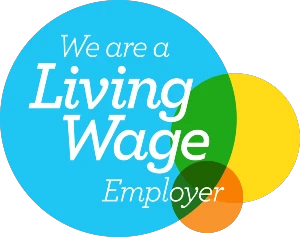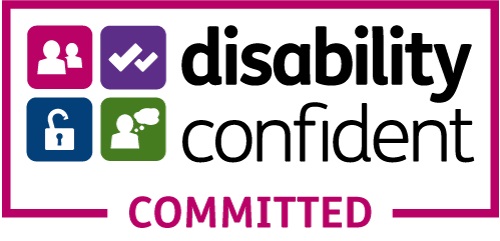One of the most hotly disputed figures of the campaign so far has been the Conservatives’ claim that Labour’s policies will, as Rishi Sunak put it, “amount to a £2,000 tax rise for everyone”. Labour have rebuffed this figure, arguing that the calculations are based on assumptions from Conservative special advisors and aren’t the ‘neutral’ calculations – carried out solely by civil servants – that the Conservatives have claimed on numerous occasions. Indeed the treasury permanent secretary, James Bowler, warned minister’s not to suggest that these stats had been produced by civil servants.
Statistics watchdog, the Office for Statistics Regulation (OSR) has warned against the £2000 figure for another reason – that “someone hearing the claim would have no way of knowing that this is an estimate summed together over four years.” Lumping multi-year costs into a single figure is another suspect statistical practice that the Conservatives have used multiple times.
But the Conservatives are not alone in employing this manipulation. Labour’s calculation that homeowners will pay “£4,800 more on their mortgage” under the Conservatives’ plans are also dubious. Alongside a raft of questionable assumptions, they have committed the same manipulation that the OSR warned about – in this case presenting a cost that would be spread over a five-year period as a single figure.
In this piece I will argue that a more numerate nation would make it more difficult for politicians to pull the wool over the electorate’s eyes and ultimately, therefore, benefit our democracy.
I suspect that many people suffer under a misapprehension of what it means to be numerate and I would like to broaden out that definition. I would guess that most people think that to be numerate means being good at doing arithmetic under pressure, but it is about so much more than that. It can be about deeper concepts that empower people to question the statistics in the newspaper headlines, to be able to calculate the impact of the rises in interest rates, or to interpret the risks of catching a disease.
It's worrying, for example, that a large proportion of people think that because the rate of inflation is falling that that means that prices will be coming down. Prices are still rising; they just aren’t rising as fast as they were. It’s analogous to the situation when you’ve climbed up the very steepest slopes of a mountain and the gradient in front of you starts to reduce. As you continue to walk forwards you are still climbing the mountain, but just not as quickly as you were before. You haven’t started descending so your height is still increasing, but more slowly than before. These are the sorts of insights that increased numeracy can instil in our population.
A little mathematical knowledge in our increasingly quantitative society can help us to harness the power of numbers for ourselves.
Simple rules allow us to make the best choices and avoid the worst mistakes. Small alterations in the way we think about our rapidly evolving environments help us to ‘keep calm’ in the face of rapidly accelerating change, or adapt to our increasingly automated realities. Basic models of our actions, reactions and interactions can prepare us for the future before it arrives.
Half the battle for mathematical empowerment is daring to question the perceived authority of those who wield the weapons – shattering the illusion of certainty. Appreciating absolute and relative risks, ratio biases, mismatched framing and bias gives us the power to be sceptical of the statistics screamed from newspaper headlines, the ‘studies’ pushed at us in adverts or the half-truths that come tumbling from the mouths of our politicians. Understanding concepts like dependent and independent events allows us to disperse obfuscating smoke screens, making it harder to fool us with mathematical arguments, be they in the courtroom, the classroom or the clinic.
Partisanship is easy to detect through people’s words. Numbers, on the other hand, are easier to spin surreptitiously.
Statistics can be cherry-picked to present a particular angle on a story. Other figures are ignored altogether and misrepresentative stories are created purely by omission. Sometimes it is the studies themselves that are unreliable. Small, unrepresentative or biased samples, in conjunction with leading questions and selective reporting can all make for unreliable statistics. We need to be able to spot these flaws.
More subtle still are the statistics used out of context so that we have no way to judge whether, for example, a 300% increase in cases of a disease represents an increase from 1 patient to 4 or from 500,000 patients to 2 million. Context is important. It’s not that these different interpretations of numbers are lies – each one is a small piece of the true story on which someone has shone a light from their preferred direction – it’s just that they are not the whole truth. We are left to try to piece together the true story behind the hyperbole – but we can’t do that without decent levels of numeracy.
There are multiple ways to be economical with the truth using mathematics.
The stats proclaimed in newspapers, championed in adverts or spouted by politicians are frequently misleading, occasionally disingenuous, but rarely completely incorrect. The seeds of the truth are usually contained within their figures, but very rarely the whole fruit. Sometimes these distortions are a result of wilful misrepresentation, while on other occasions the perpetrator is genuinely unaware of the bias they are imposing or the errors in their calculations.
In his classic book, How to Lie with Statistics, Darrell Huff suggests that ‘despite its mathematical base, statistics is as much an art as it is a science’. Ultimately, the degree to which we believe the stats we come across should depend on how complete a picture the artist paints for us. If it is a richly detailed, realist landscape with context, a trusted source, clear expositions, and chains of reasoning, then we should be confident in the veracity of the numbers. If, however, it is a dubiously inferred claim, supported by a minimalist single statistic on an otherwise empty canvas, we should think hard about whether we believe this ‘truth’.
Better numeracy gives us the power to interpret these pictures for ourselves and to make those judgement calls.
We have seen many instances already that prove that this election campaign is being fought with disinformation and statistical manipulation. It’s more important than ever that we fact check the stats we are being fed and hold our politicians to account. Quite simply, a more numerate society would give us the ability to do this more thoroughly and ultimately would benefit our democracy.








